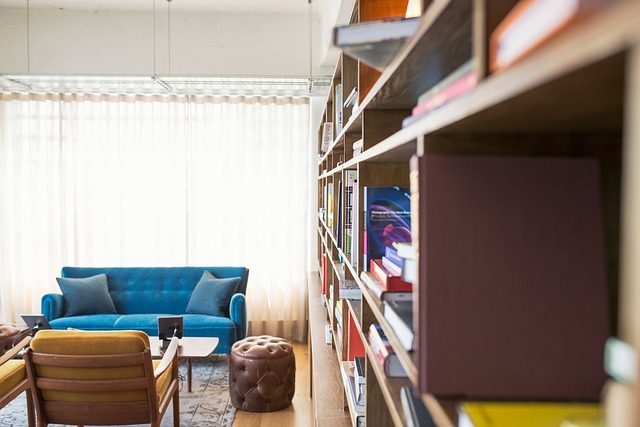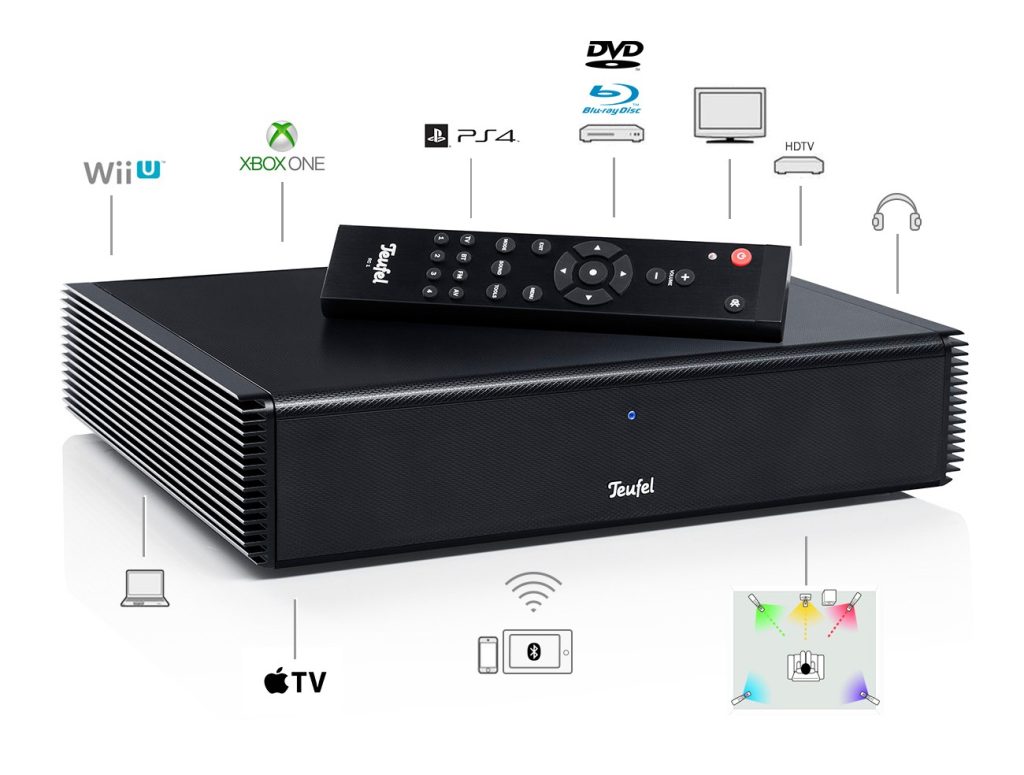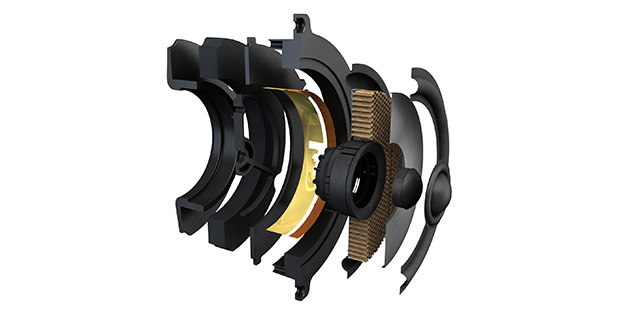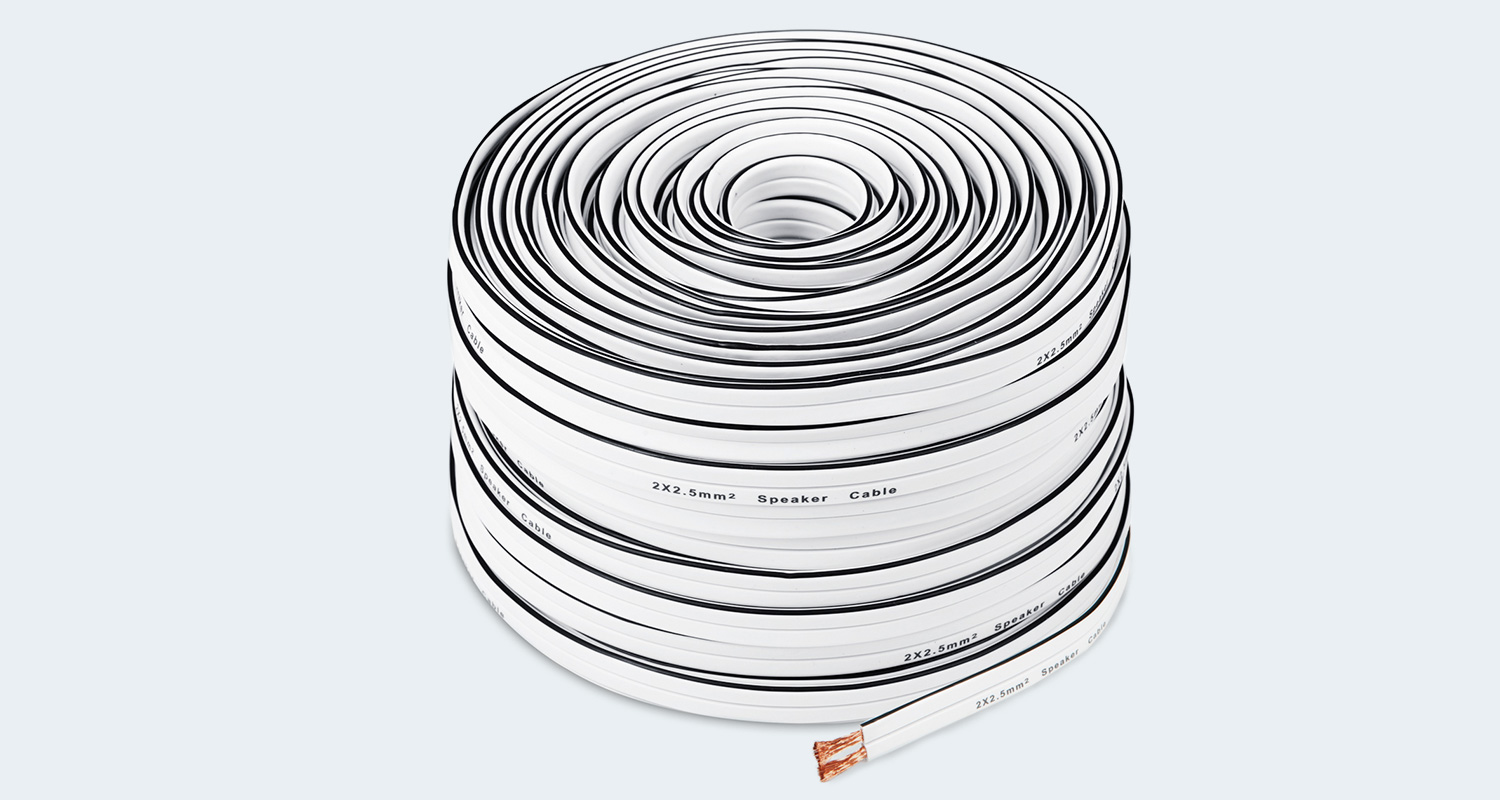A sound system can only play as well as the room in which it is installed will allow. This old Hi-Fi wisdom is often neglected. Some people don’t even know the sound potential that different rooms can offer, or that room acoustics can be improved relatively easily. Let us explain.
Sound waves and rooms – from the source to the ear
Suppose you have decided to invest in a home cinema system that has won you over you after a couple of move nights at a friend’s place. It’s quite possible that the same setup and the same film may sound very different in your home – because the room is, itself, literally audible. Most of the sound waves emitted by a speaker do not hit our ears directly. They oscillate through the room from the sound source – the speaker membrane – at 340 m per second, hit walls, the ceiling and other surfaces, and are reflected by them therefore only hitting our ears indirectly.
You can read more information about acoustics in general in this article.
Improve room acoustics with ease
If you speak aloud in a totally empty room you may feel that your voice sounds strange or unpleasant. The reason for this is the reverberation caused by naked walls. Strong or prolonged reverberation can occur when a comparatively long time passes before the sound level, after the actual sound event, has subsided.

An echo – such a strongly delayed reverberation of a sound event that we perceive it as an entirely independent sound event – occurs rarely in a normal house. To cause such a long delay, the distance between the ear and reflective walls has to be extremely large – and who lives in a palace or a warehouse? However, even in our normal four walls, long reverberations of the sound waves can have a negative effect on the sound. To improve your room acoustics, you have to cushion the sound reflections and make them more easily diffused. Such methods can help:
- ➥ Cover large bare wall surfaces, e.g. with open book shelves and panels of fabric.
- ➥ If there are two opposing walls, at least one should be blocked with a shelf or similar.
- ➥ Hang curtains in front of windows; thick fabric curtains work best.
- ➥ Placing upholstered furniture in the room will also absorb sound.
- ➥ Slopes and slants from standing cabinets help reflect and diffuse the sound waves.
Tell me where you stand – and I’ll tell you what you hear
Sound differences do not only result from different rooms. The sound impression also changes with the listening position within a room. From an acoustic point of view, wall areas or corners are a bit of a no-go as listening positions. If possible, sofas and armchairs should not be placed there. It is precisely in these zones that increased sound pressure levels and humming often occur due to sound reflections. A minimum distance of 1 metre between the listening position and wall can often improve the room acoustics. In rooms with a rectangular floor plan, there are particularly high acoustic risks. Room modesOpens in new tab can form. Low-frequency sound waves (bass) either amplify each other or cancel each other out.
If the listening position is one side of the coin, then the position of the speakers is the other. We have already looked at these in several blog posts:
- ➥ The sweet spotOpens in new tab offers a good orientation for the adjustment of room size, speaker distance and listening position.
- ➥ Symmetry is important when it comes to creating the correct speaker setupOpens in new tab.
- ➥ You can ensure that you get the right room acoustics with speaker coupling.
The Teufel CoreStation takes over the fine tuning
The Teufel CoreStationOpens in new tab is a compact AV receiver that offers powerful performance, easy operation, plenty of features plus the ability to make itself completely inconspicuous in your living room. The Distance menu allows you to compensate for different distances between the speakers and the listening area, so that your speakers play in harmony.
Conclusion: Improve your room acoustics with ease
- Rooms influence the reflections of sound waves and therefore also have an effect on the sound of speakers.
- Important factors are wall distances and surface quality.
- Bare surfaces of opposing walls can cause prolonged reverberation and should be avoided.
- You can instantly improve your room acoustics with fabric curtains, bookcases and furniture.
Titelbild: ©Alexander Svensson, Elbphilharmonie Grand Hall all rights reserved. Source: Flickr
Bild1: ©Pexels, all rights reserved. Source: Pixabay





Leave a Reply